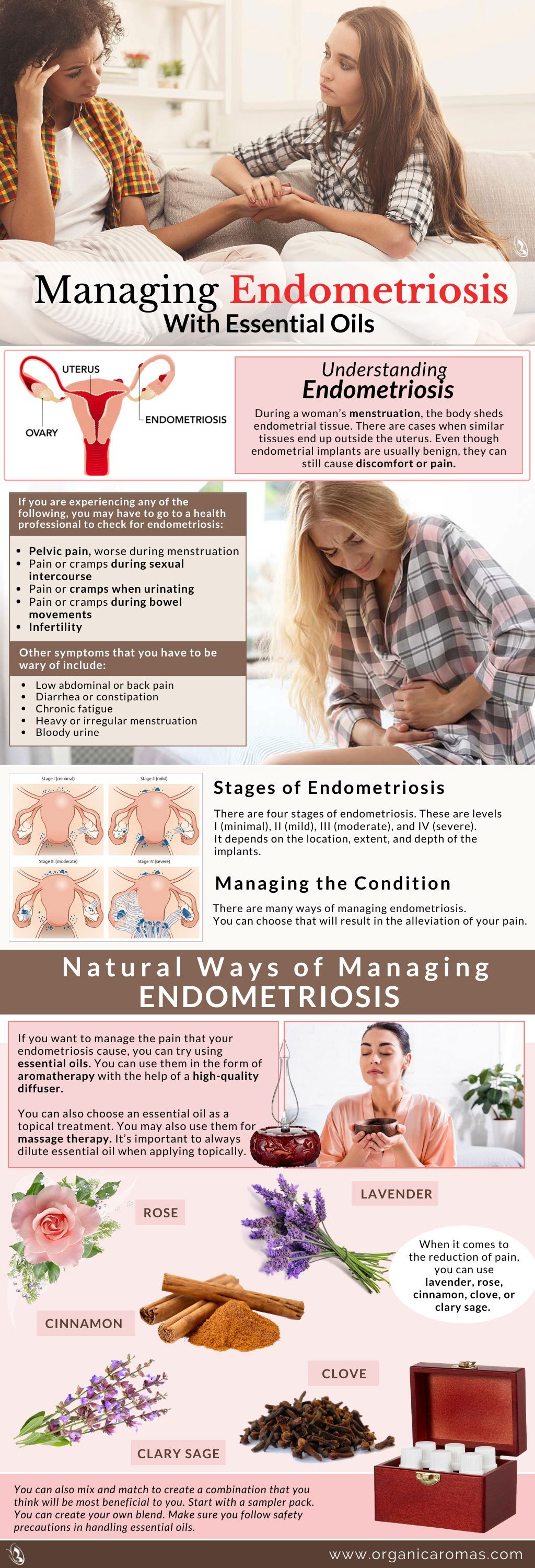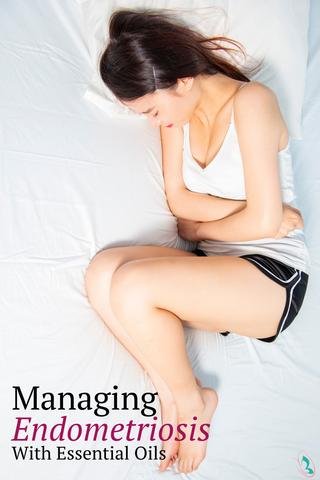Managing Endometriosis With Essential Oils
Endometriosis is a disease that affects more people than we think. Many women are trying hard to find ways to deal with it. According to the office on Women’s Health, more than 11% of women in the United States between 15 and 44 suffer from this condition.
Understanding Endometriosis
Endometriosis is a condition wherein endometrial cells grow abnormally outside the uterus, ovaries, fallopian tubes, or bowel. In some cases, it also ends up affecting other organs like kidneys, lungs, diaphragm, or bladder. It may induce a chronic inflammatory reaction, which may lead to scar in some tissues.
During a woman’s menstruation, the body sheds endometrial tissue. However, there are cases when similar tissues end up outside the uterus. Even though endometrial implants are usually benign, they can still cause discomfort or pain.
This condition is not something that only affects the internal organs. It also causes severe pain. To further understand it, one has to be aware of the symptoms. If you are experiencing any of the following, you may have to go to a health professional to check for endometriosis:
- Pelvic pain, which may be worse during menstruation
- Feeling pain or experiencing cramps during sexual intercourse
- Feeling pain or cramps when urinating
- Painful or having cramps during bowel movements
- Infertility
Other symptoms that you have to be wary of include:
- Low abdominal or back pain
- Diarrhea or constipation
- Chronic fatigue
- Heavy or irregular menstruation
- Bloody urine
In rare cases, the patient may also experience chest pain, coughing, headaches, or seizures.
A doctor can diagnose the condition based on the symptoms the patient experiences. It may also be seen during a physical examination. However, a definite diagnosis usually needs confirmation through surgery, such as laparoscopy.
The intensity of pain that a patient experiences may also vary per month. Some women have reported worsening symptoms. Meanwhile, others say the pain is manageable without treatment.
Stages of Endometriosis
There are four stages of endometriosis. These are levels I (minimal), II (mild), III (moderate), and IV (severe). It depends on the location, extent, and depth of the implants. The presence of scar tissue may also determine the type that the patient has. The most common cases fall under the minimal or mild categories. If one has moderate or severe endometriosis, one might end up having cysts or severe scarring.
Experts have not determined the exact cause of this condition. However, they have come up with some theories on what may contribute to a higher risk level. These factors include genetics, hormones, problems with the menstrual cycle, or exposure to chemical compounds before birth.

Managing the Condition
There are many ways of managing endometriosis. You can choose that will result in the alleviation of your pain. Doctors usually advise patients to try conservative treatments first.
- Over-the-counter pain relievers can reduce menstrual cramps.
- Some doctors also suggest having hormone therapy wherein the patient takes supplementary hormones to eliminate the painful effects of endometriosis. You can take hormonal contraceptives, gonadotropin-releasing hormone agonists and antagonists, progestin therapy, or aromatase inhibitors. Check with your doctor to see if any of these choices apply to your condition.
- Other patients choose to go through surgery, fertility treatment, or removal of uterus and ovaries.
Natural Ways of Managing Endometriosis
Aside from medical procedures, one can also help alleviate the pain by using natural products. There are health practitioners that advocate for the use of essential oils to address health conditions.
Essential oils are the concentrated extracts that come from plants. For many years, they have been useful due to their therapeutic properties. These fragrant scents have properties that promote relaxation, improve a person’s skin condition, and alleviate pain. Thus, they provide an alternative treatment for various conditions.
If you want to manage the pain that your endometriosis cause, you can try using essential oils. You can use them in the form of aromatherapy with the help of a high-quality diffuser. You can also choose an essential oil as a topical treatment. You may also use them for massage therapy. It’s important to always dilute essential oil when applying topically.
Many studies have proven the benefits of essential oils. When it comes to the reduction of pain, you can use lavender, rose, cinnamon, clove, or clary sage. You can also mix and match to create a combination that you think will be most beneficial to you. Start with a sampler pack. From there, you can create your own blend. Make sure you follow safety precautions in handling essential oils. You also have to monitor the reaction of your body to the essential oils.
If you are thinking of using essential oils to help manage your endometriosis, you can discuss it with your doctor. Keep in mind that these natural products are there to help, but they do not promise total treatment. For severe cases, your doctor will be the best person to provide advice.
Pin It!






